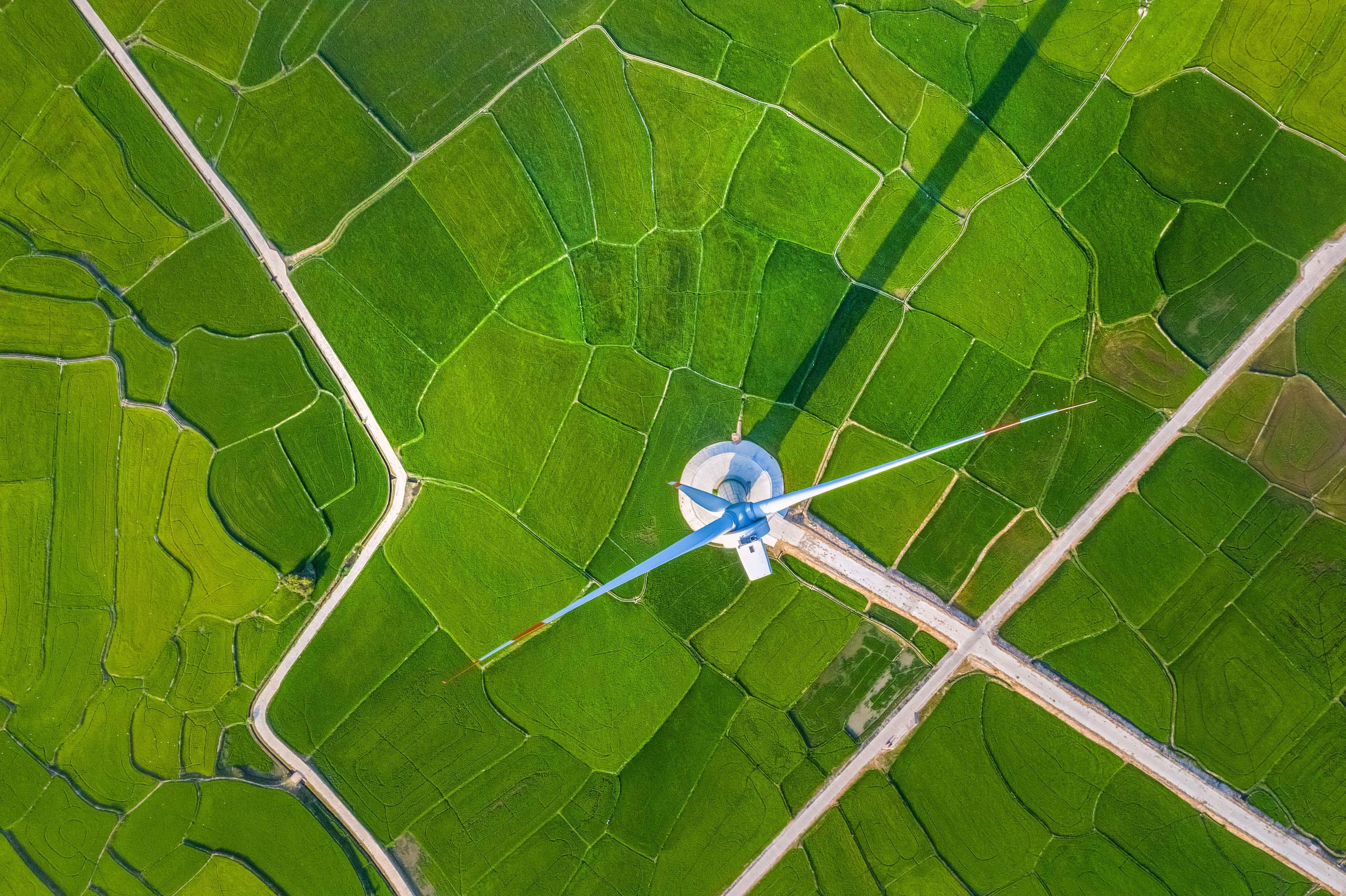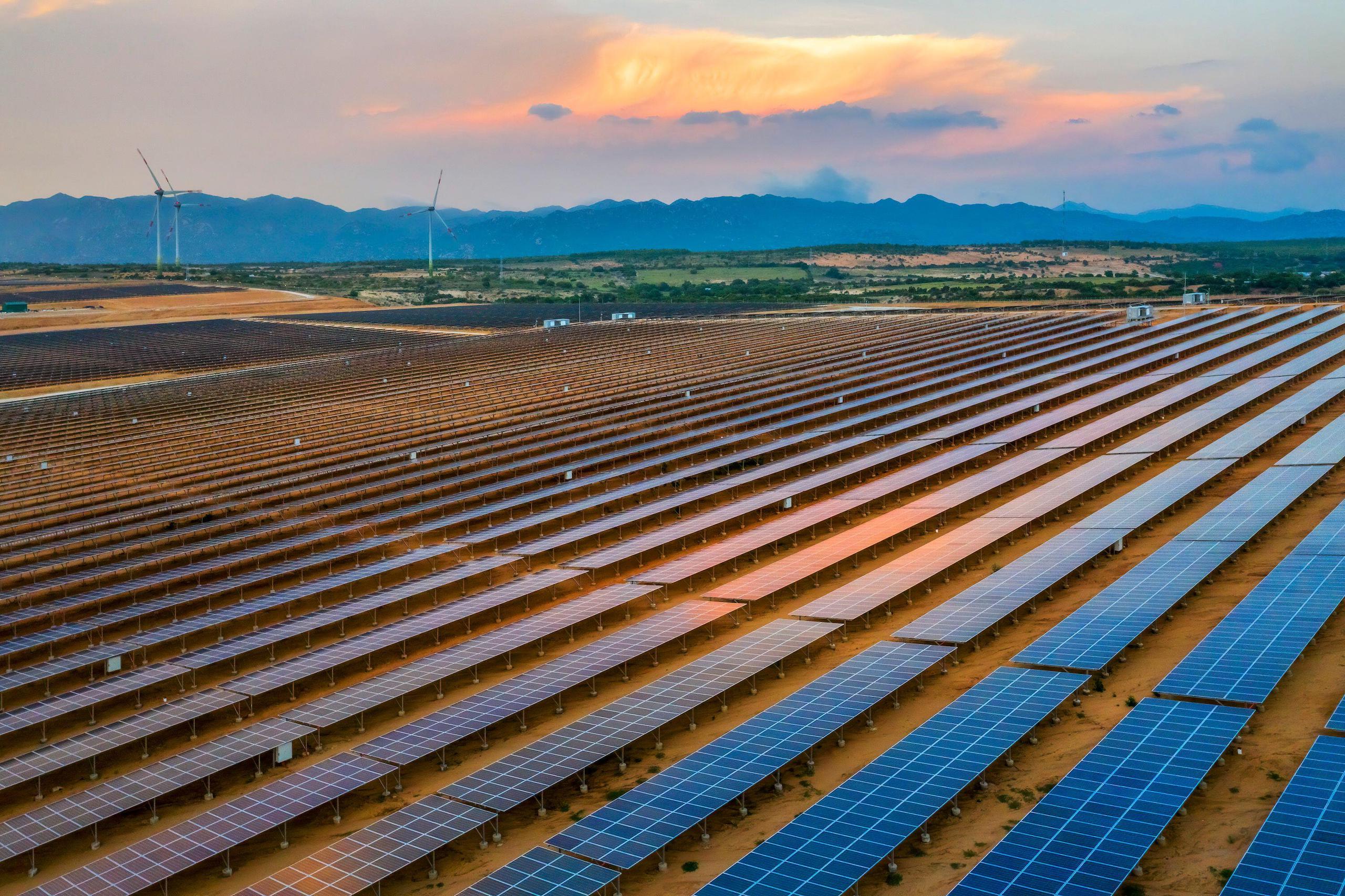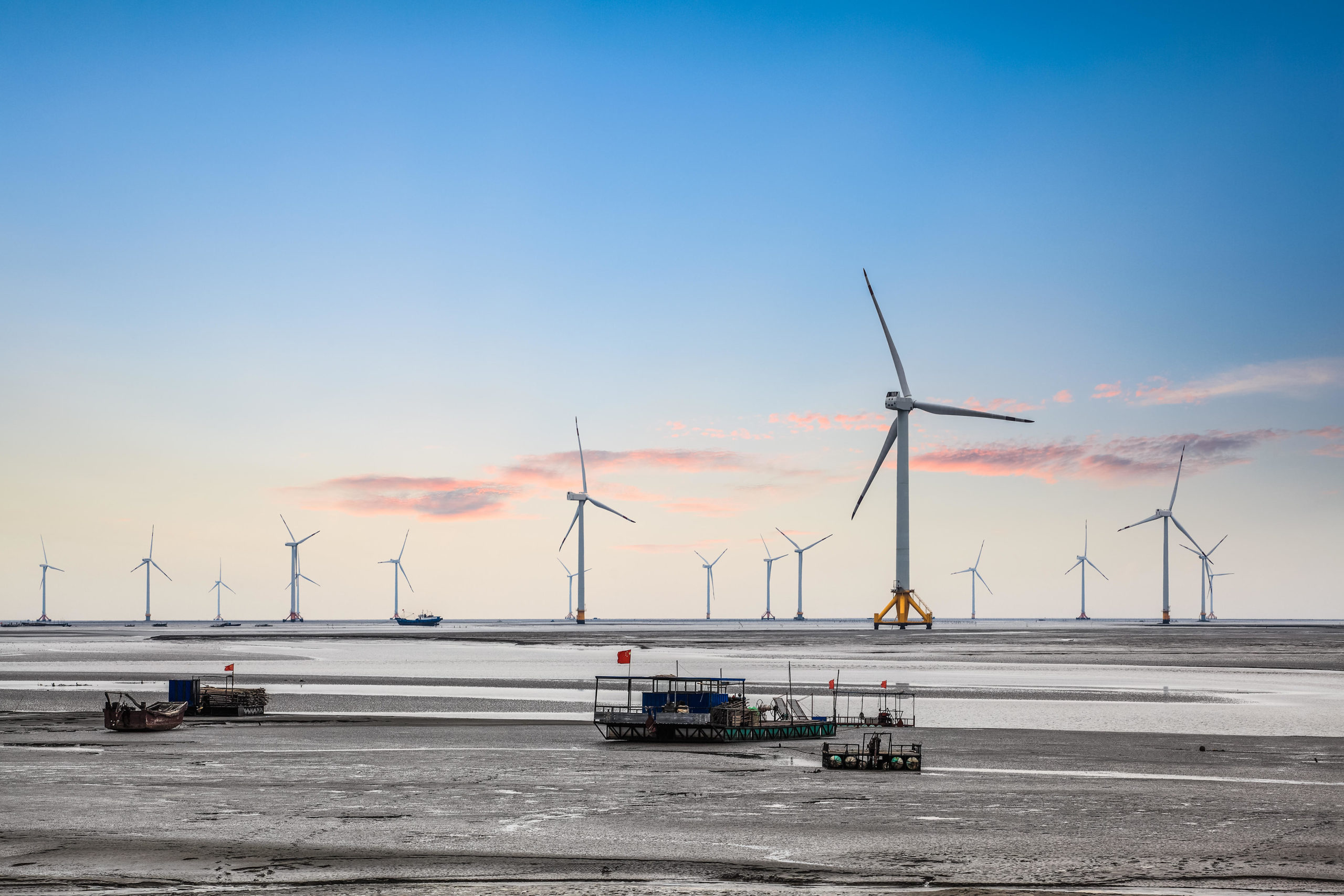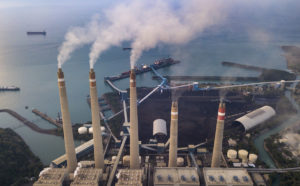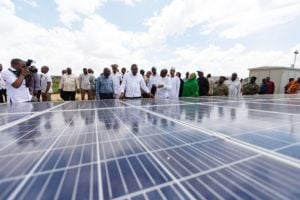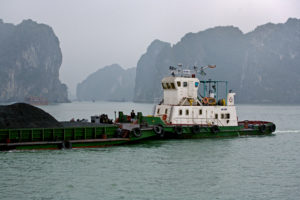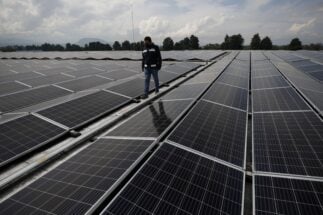Southeast Asia is today one of the world’s most economically dynamic regions, maintaining annual per capita GDP growth of over 3.5% in the decade up to the pandemic, higher than the US, Japan and Europe. Rapid growth has raised living standards significantly, but also brought serious environmental problems including smog, water pollution and CO2 emissions. The main cause of these problems is the extraction and use of fossil fuels.
In recent years, the major energy-consuming countries of ASEAN (the Association of Southeast Asian Nations) – including Indonesia, Vietnam and Thailand – have made “carbon-neutral” commitments and introduced a series of policies for promoting their transition to low-carbon power. But effecting that transition is no simple matter. Difficulties in developing solar photovoltaics (PV) in Vietnam, after the sector was initially hailed as very promising, and the struggle to get renewable energy off the ground in Indonesia, highlight the complexity of implementing the transition. China, as an electricity-transition pioneer among developing countries, can be a “booster” for the transition in ASEAN by formulating stronger policy cooperation with the region, as well as sharing its own experience and lessons learned.
Vietnam: Curtailment after a solar PV boom
On one level, Vietnam is the model of success for solar PV development in ASEAN. By the end of 2020, total installed capacity reached 16.5 gigawatts (GW), up by a factor of almost 160 compared with 2018, and surpassing the target set for 2030, of 12 GW. It was a burst of growth that saw Vietnam leapfrog Thailand to become ASEAN’s leader in installed solar PV capacity, with over 70% of the total.
The breakneck growth was largely down to a series of support policies introduced by the government. To attract solar PV investment to the country – and taking into account the convoluted approvals process for solar PV projects – the government introduced highly favourable feed-in tariffs. Solar PV plants commissioned before 30 June 2019 were able to benefit from a 20-year preferential feed-in tariff, selling electricity to the grid at US$93.5 per megawatt hour (MWh).
New tariff regulations in April 2020 saw the solar PV feed-in tariff reduced to between US$70.9 and $83.8 per MWh, but this still left investors with ample room for profit. The levelised cost of energy (LCOE) – meaning the full life-cycle costs of a technology per unit of electricity it generates – for solar PV in Vietnam was in the region of US$66 to US$76 per MWh between 2019 and 2020. The downward trend in cost will continue as the technology advances. The Vietnamese government has also provided a series of incentives for solar PV companies, including income-tax breaks and exemptions from equipment import tariffs.
It was these preferential policies that brought the boom in solar PV investment. The vast majority of new solar PV plants are concentrated in the country’s solar-rich central and southern coastal provinces. They rely mainly on a few 220kV trunk transmission lines connected to Ho Chi Minh City and industrial bases in the south-east, offering limited capacity. In fact, the rapid growth has overwhelmed Vietnam’s power grid, forcing the national utility, EVN, to “curtail” – meaning waste – solar PV power generation in order to ensure the safety and stability of the system.
In 2021, Vietnam reportedly curtailed 500 gigawatt hours (GWh) of solar PV power. At one point, the curtailment rate at Thuan Nam, Vietnam’s largest solar PV plant, with a capacity of 450 MW, was around 40%. And as wind power becomes the next big thing in Vietnam, the curtailment issue is beginning to rear its head in that sector too. The problem of grid capacity, and the need to solve it, has become the biggest constraint on Vietnam’s electricity transition.
Indonesia: System lock-in and limited scope for green power development
To address electricity shortages, in 2015 the Indonesian government rolled out a plan to expand capacity by 35 GW by 2019, a deadline which has since been extended to 2024. The programme largely comprised thermal power projects. Renewables, including hydropower and geothermal projects, accounted for only around 10% of total installed capacity. This capacity expansion plan was based on a highly optimistic estimate of around 8% annual growth in electricity demand. However, a range of factors, including Covid-19, kept growth to around 4%.
This created surplus supply in Indonesia’s electricity market, with most of the new capacity being supported by “take-or-pay” power purchase agreements. This means that Indonesia’s state electricity utility, PLN, has to purchase and pay for electricity as agreed, whether it needs it or not. The oversupply problem may worsen in the next few years as more of the power plants currently under construction come on stream. It is estimated that PLN’s reserve margins will reach 40–60% in the Java–Bali grid and 30–56% in the Sumatra grid over the next 10 years, far exceeding the recommended 20–30%. This makes the scope for developing renewable energy generation in the coming years extremely limited.
Indonesia’s changing policies for green electricity subsidies, stringent local content requirements, and below-market coal prices have variously contributed to the reduced scope for renewable energy power generation. In addition, the Indonesian government often requires PLN to subsidise electricity prices, for reasons of affordability. From 2017, electricity subsidies shot up, reaching 54.8 trillion rupiahs (US$3.5 billion) in 2020, as the government suspended the mechanism for electricity tariff increases. This, coupled with frequent shortfalls in government support, resulted in PLN being financially stretched and unable to undertake the necessary grid upgrades and improvements in support of green power, further shrinking the scope for development of green power.
Reconfiguring electricity systems for renewable energy
The transition predicaments faced by Vietnam and Indonesia, as two of ASEAN’s leading economies, are largely symptomatic of the main challenge along ASEAN’s path to electricity transition: while green power has arrived, the system lags behind. Electricity transition is a long and complex process. With solar, wind and other clean energy technologies maturing and becoming increasingly economical, and now being adopted on a large scale, the electricity transition is gradually entering its “breakthrough phase”. The key to making that breakthrough is reconfiguring the electricity system around new sources of energy.
The first requirement is to end the system’s “lock-in” to the existing development pathway. Indonesia’s transition predicament provides a striking illustration: over-investment in coal power has reinforced the old electricity system and impeded development of green power. Unlike coal-rich Indonesia, Vietnam, which lacks such resources, looks more to the development of solar PV and other forms of clean energy to meet its rapidly growing demand for electricity. However, lack of attention to improving load capacity in the grid has led to bottlenecks in the system.
These bottlenecks reflect limitations in ASEAN countries’ policies for electricity transition. In most of ASEAN, policy frameworks for electricity are still largely oriented to “maintaining the status quo”, with thermal power remaining dominant. Clean energy is considered complementary to thermal power, not a substitute. Transition efforts tend towards encouraging investment in green power through a range of policy instruments, including generous feed-in-tariffs, tax incentives and financial subsidies, while insufficient attention is paid to system-level transformation. It would be unrealistic, though, to expect a low-carbon transition to be achieved simply by means of incentive policies and a few green electricity projects.
Moreover, with the rapid development of green power, its incompatibility with the old system becomes increasingly apparent. This significantly weakens the efficacy of these incentive policies, in terms of transition, and correspondingly retards the transition process. The transition predicaments faced by Vietnam and Indonesia are conspicuous examples of the problem, and the drive to reconfigure the system is key to making the breakthrough.
Deepening cooperation as China helps reconfigure ASEAN’s electrical systems
Relations between China and ASEAN have grown apace since the early 1990s, with cooperation deepening in areas from political dialogue to regional security, trade and investment, and science and technology exchanges. On the energy front, through bilateral and multilateral cooperation mechanisms, China has promoted the construction of a series of large-scale projects in the region. China and ASEAN can look to building on these foundations to expand cooperation in the energy sphere, from construction projects to the sharing of transition experience, driving forward ASEAN’s reconfiguration of its electricity systems around renewable energy.
As an energy-transition pioneer among developing countries, China has seen tremendous growth in renewable energy in recent years. By the end of 2021, China’s total non-fossil energy generation was 2.9 trillion kWh, accounting for 34.6% of its electricity generation. Meanwhile, the share of coal power generation declined from over 70% in 2010 to around 60% in 2021. And with power sector reform entering a more challenging phase, the mismatch between renewable power generation and the existing electricity system has become increasingly apparent.
From around 2016, the phenomenon of curtailed wind and solar power emerged across large tracts of China. In Xinjiang, Gansu and Inner Mongolia, the three major provinces for wind and solar power, more than 30% of wind power capacity was left unused. To tackle this problem, China brought in a series of policies to break through the “stranglehold” on channels of transmission for green electricity, using top-down planning to lead on power grid construction. In addition, the establishment of a national monitoring and alert mechanism for renewable energy consumption has steered the flow of green electricity investment into areas with good grid capacity, alleviating the low utilisation issue for wind and solar. During the first nine months of 2022, China’s national utilisation rate for wind and solar power reportedly exceeded 96%.
In recent years, lack of flexibility in the electricity system and its inability to respond promptly and effectively to fluctuations in renewable energy supply has become a major constraint on China’s power sector transition. The imposition of power cuts in Sichuan during August and September of this year was a prominent illustration of the problem. To resolve this, China has begun to push for more responsiveness and flexibility from coal-fired power plants, transforming them from the main source of power into one that regulates load and guarantees supply, meanwhile ending the development pathway lock-in so that coal power can usher in an expansion of green power.
Long-term planning plays a leading role in the construction of electricity systems in ASEAN, as it does in China. In key ASEAN countries including Indonesia, Thailand, Malaysia and Vietnam, state-owned utilities are the “sole buyer” on the electricity market, and they promote development of the electricity system by helping energy authorities formulate long-term plans for the industry. Effective planning is an important area of experience that China can share with ASEAN countries, breaking the electricity system’s development pathway lock-in as soon as possible and driving rapid reconfiguration of the system to achieve more take-up of green power. With China–ASEAN cooperation on electricity transition deepening and the transition in ASEAN gathering pace, China should consider speeding up its own transition, if it is to continue guiding the course of electricity transition in ASEAN.
